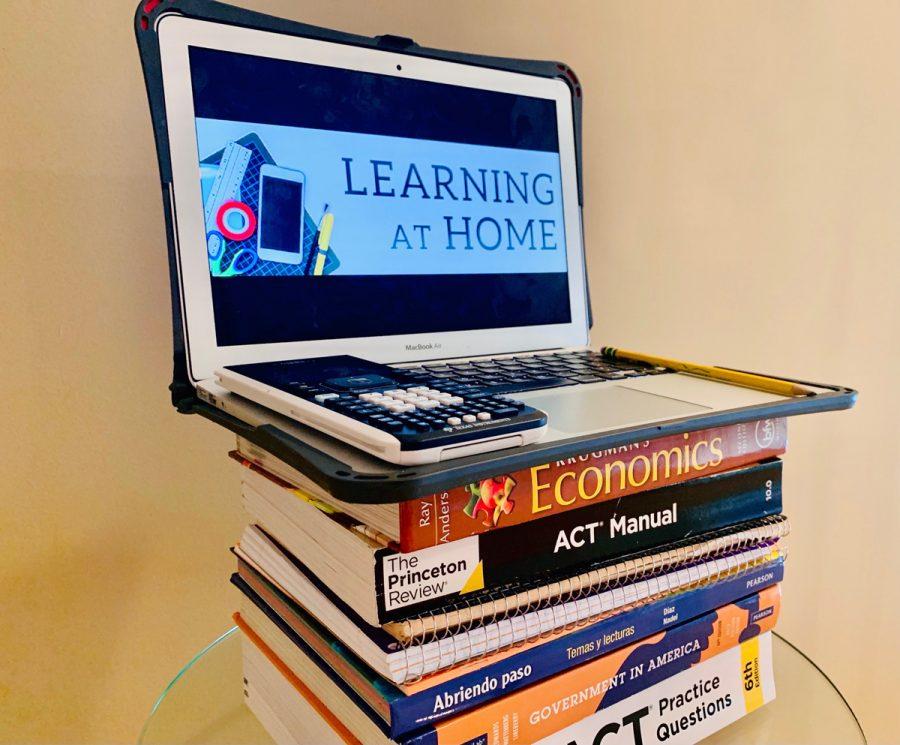Teens adapt as pandemic upends school routines
Published September 24, 2020
COVID-19 has put many teenagers in a position they would never have been able to imagine, going to school from the safety of their own bedrooms. Over the past few months online learning has risen in popularity as the virus has spread rampantly among the nation. While some students have taken this new experience in stride, others find it difficult to cope with learning from such a distance. Noah Sentnor, a student at Parkway North High School, is one of many who have found some positives in the new style of learning.
“Something that I like about online school is the fact that I can wake up later than I would have, because I don’t get tired until about 12 a.m.,” Sentnor said. “During [pre-COVID] school, I would fall asleep at 12 and have to get up at 6:30 to get to school by 7 or 7:30. Now I can fall asleep at 12 and get up at 9 or 9:30, while still getting to school on time.”
At Sentnor’s school, classes start later in order to help students adapt to learning at home. As a result, class times are shorter, so there is often an increased workload outside of the virtual classroom.
ADVERTISEMENT
“The hardest part of online school is probably the amount of homework. The first week I got, and I’m not over-exaggerating, six hours of homework each night. And that wasn’t fun.”
Sentnor isn’t the only one who feels overwhelmed by the amount of homework in an online classroom. Ladue sophomore Josh Rosen also believes that the lack of class time can lead to stress over workloads.
“Online school is making the best of a bad situation, but I think teachers are leaning hard on the fact that there is less class time to give extra work,” he said.
ADVERTISEMENT
Although these online classrooms can be challenging for students because of the lack of class time, they aren’t necessarily the only method of learning. Some schools have the option for classes that are partially in person in order to facilitate deeper discussion and understanding of subjects. Remi Hoberman’s school, Whitfield, is one of those schools doing the half-and-half model.
“I learn best when I’m directly with the teacher and can work one-on-one. I find it helpful to be in the classroom, but there are pluses and minuses in both online and in person [learning],” Hoberman said. “During [in-person] school, the biggest class that I have is eight people. We have wheelie chairs and if your wheelie chair and somebody else’s wheelie chair are back to back you still have a 3-foot gap. So, I generally feel completely safe while at school.”
Although Hoberman does do school partially in person, students do their best to stay safe when they aren’t in school by staying socially distant from others, and wearing masks when needed.
“I feel like it’s important to know your boundaries, whether you’re comfortable seeing other people, whether you’re comfortable not,” Hoberman said. “Just have to know where the balance is. You have to know who is comfortable with what, and what you can do to communicate with them.”
Overall, regardless of whether they went to school completely online or with the half-and-half model, everybody had the same general consensus: It is important to keep the people in our community safe, and that means we should do everything that we can in order to help people around us during this time.
“I definitely think that it’s very important for us to have the online school option because the coronavirus is a very real thing,” said Hoberman. “If we had school all in person then we would be spreading it, because if one person gets it then it’s hard to not let other people get it. In schools it will spread. Masks work, but we can’t avoid that.”















